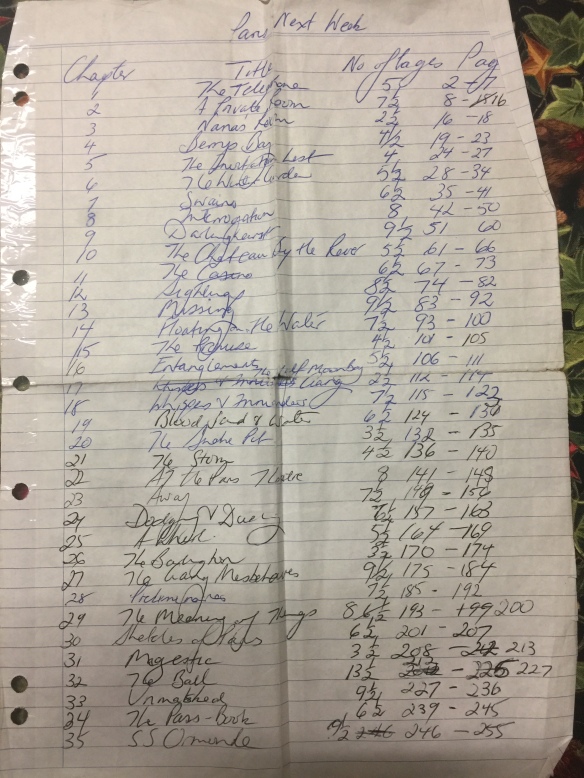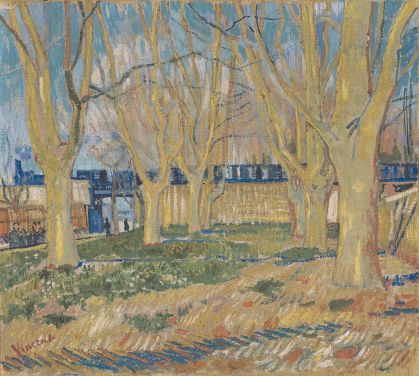Well, as you can see it’s a very crumpled messy piece of paper but it is the start of my manuscript with the working title of Paris Next Week. As you can also see the first two and a half pages were written over three years ago on the 5/8/2013. Being Australian that means the 5 August not the 8 May. On the 25/2/2014 I ended up with 43 and a half pages. Not a bad start but overall the slowest first draft I’ve ever written, However keeping a record such as this does help remind me of several things.
Firstly, as you can see near the top of the page there is a gap of three months. Not sure why now but probably had to stop and really think about what was happening with the novel and to check that I was heading in the right direction after the excitement of getting those first five pages down.
Secondly I can see now where I took breaks of over a week or two for research. These are breaks that I couldn’t be avoided by using hashtags (see my earlier posts). In May 2014 I took two weeks off looking for a suitable chateau by a river in France. In early October of the same year I took a week or so off researching Kings Cross. And then from late October 2014 to early July 2015 I didn’t write a page. I was doing a major rewrite of a previous manuscript for a couple of months and then during the first half of 2015 I was quite ill suffering from a severe flareup of eczema.
During 2015 and early this year I also wrote three short stories featuring a brand new character called Zach. More breaks to research Sydney Theatres and quite a long break researching 1920s actresses and their famous roles and also looking for 10 locations that my main character Sarah’s grandmother would have been tempted to sketch in the 1860s in Paris. Whew!
Above is the home run with the very last entry written sidewise just last week, 4 and a half pages finishing the final chapter entitled S S Ormonde. I also did some editing checks and eliminated two words that I used a frightening number of times – one was the word ‘word’ and the other ‘beautiful’. I’ll be doing a lot more of this type of editing in the next draft but these two jumped out at me and I felt compelled to reduce them drastically.
And this is what makes it all worth while. A list of all the chapters and a rough page count.
35 chapters, 255 pages and 70,687 words. The page numbers are pretty much screwed after chapter 27 because I did add a page here and a page there to some scenes that had to be rewritten but it is close enough. This sheet is one thing I don’t keep up for the next few drafts as the manuscript is in a state of flux with rewriting and researching going on but I do tend to write another one of these up for the final draft.
Would love to hear how you all keep a record of your drafts. Probably not as old fashioned as this but the result will be the same – words into sentences, paragraphs into scenes, transformed into chapters to form a complete first draft of a manuscript. Happy writing and a Happy New Year!















